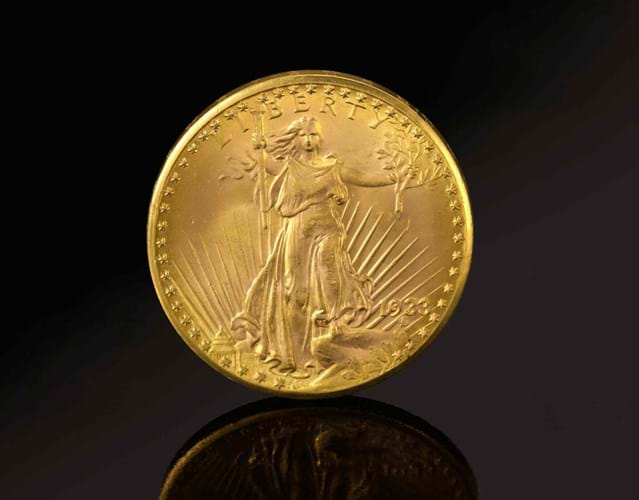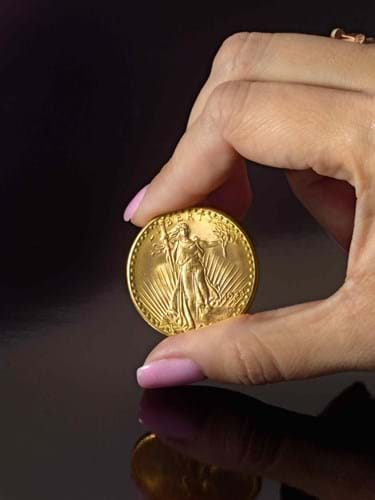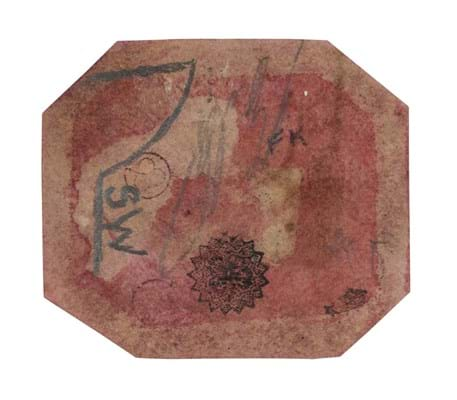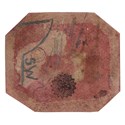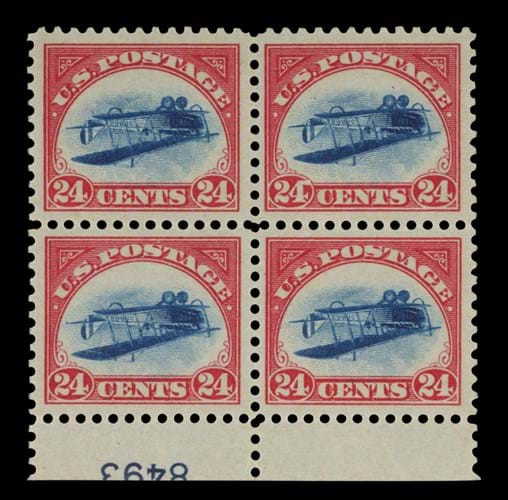
Together the US gold coin, British Guiana stamp and ‘Inverted Jenny’ plate block are estimated to raise up to $37m (£26.6m). If they achieve their predicted prices at the auction on June 8, the three objects would set auction records in their respective categories.
Weitzman, who will donate proceeds from the sale towards medical research, higher education and art projects, said: “I had a life-long dream of collecting the single greatest rarities in the two great collecting areas of stamps and coins and then placing these extraordinary treasures, hidden away for decades, on continuous public view.”
1933 Double Eagle coin
The lots include the 1933 Double Eagle coin which had previously set a record for any coin when Weitzman bought it anonymously at Sotheby’s New York in July 2002. Making $7.59m (£4.93m) with premium, it nearly doubled the previous saleroom high for a coin at the time. It was subsequently exhibited at the New-York Historical Society Museum & Library which has housed it since 2013.
The coin is regarded as something of a ‘Holy Grail’ for American coin collectors. A unique 20-dollar coin, it is the only one of its kind that is legally owned by a private individual.
Known as the coin that took the US off the Gold Standard, 1933 Double Eagles were the last American gold coins struck by the United States Mint but were never legally issued for use. All 1933 Double Eagle coins were ordered to be destroyed with the exception of two examples set aside for the Smithsonian Institution. Several examples however are known to have gone missing and some have since appeared on the market even though they have been declared stolen from the US government and therefore illegal to own.
However this example had erroneously been granted an export license in 1944 and had entered the famed coin collection of King Farouk of Egypt. Having later re-entered the US, it was seized during a Secret Service sting at the Waldorf-Astoria in New York in 1996 before becoming the subject of a five-year legal battle.
It was sold at the 2002 auction on behalf of the US Government following a landmark settlement. At the conclusion of the auction the buyer, Weitzman, received a signed Certificate of Monetization from the Director of the United States Mint, effectively turning the coin into legal tender.
At Sotheby’s this time round it will be estimated at $10m-15m. The record for any coin sold at auction is currently held by a 1794 ‘Flowing Hair’ silver dollar sold for $8.525m ($10m with premium) at Stack’s Bowers Galleries in 2013.
British Guiana one-cent Magenta
Also offered with a $10m-15m estimate is an item described as ‘the pinnacle of stamp collecting for more than a century’. The seemingly unassuming penny issue from 1856 is in fact the sole-surviving example of the British Guiana one-cent Magenta.
The stamp’s rarity comes from the fact that it was produced in British Guiana as part of a contingency supply of postage stamps created due to a shortage of the imported stamps after a clerical error at the English manufacturer. The stamps that were made using the printers of the local Royal Gazette newspaper and were thought to be entirely lost until this one was rediscovered in 1873 by a 12-year-old schoolboy living in South America.
Having since been part of some of the most important stamp collections ever assembled, it has sold at auction four times in its history – most recently at Sotheby’s in 2014 when Weitzman bid $7.9m (£4.85m), $9.48m with premium, to acquire it.
24-cent ‘Inverted Jenny’ plate block
The other lot in the sale, the 24-cent ‘Inverted Jenny’ plate block from 1918, came about as the result of a philatelic error. It dates back to when the United States Postal Service launched a new official airmail route and released a special stamp in May 1918 featuring a blue Curtiss JN-4 ‘Jenny’ biplane – the country’s first airmail carrier. Due to a printing error however, a single sheet of 100 stamps were produced with the biplanes appearing upside-down.
There was only one sheet of 100 ‘Inverted Jennies’ ever sold, and the item at Sotheby’s is the only plate block known (comprising positions 87-88 and 97-98). It last appeared on the market 16 years ago when it sold at auction for $2.97m and was subsequently purchased privately by Weitzman in 2014.
Here it estimated at $5m-7m.
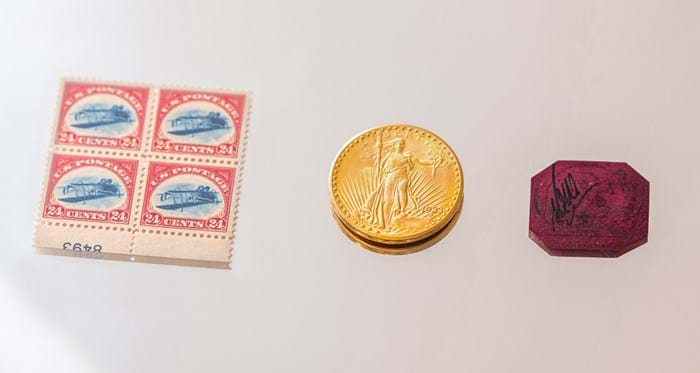
The three ‘Holy Grail’ items from the Stuart Weitzman collection: the 24-Cent ‘Inverted’ Jenny plate block, the 1933 Double Eagle coin and the British Guiana one-cent Magenta stamp.
Sotheby’s global head of books & manuscripts Richard Austin said: “As the most aspirational objects in their respective collecting fields and each with their own illustrious provenance, the Double Eagle, the British Guiana and the Inverted Jenny all hold an indelible place in history, and in our collective imagination.
“It would be a true privilege to present just one of these sought-after rarities at auction but offering all three one-of-a-kind treasures together in the same sale is a once-in-a-lifetime occurrence. It is a testament to Stuart’s perennial passion and dedication to his childhood ambition of acquiring these prized pieces that we are able to create a special moment to share their stories with the world at once.”


